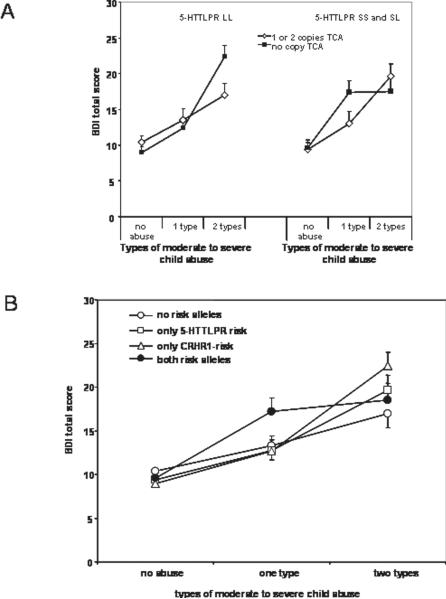Figure 3. Interaction between 5-HTTLPR S-allele carrier status and CRHR1 TCA haplotype carriers and child abuse on adult depressive symptoms.
Panel A: Depression symptoms using the BDI are graphed as a function of 5-HTTLPR and CRHR1 genotype. Left panel, individuals with 5-HTTLPR LL genotypes are represented with lines representing 1 or copies vs. no copies of the protective TCA CRHR1 haplotype. Right panel, individuals with 5-HTTLPR SS or SL genotypes are represented with lines representing 1 or copies vs. no copies of the protective TCA CRHR1 haplotype. An overall gene × gene × environment interaction is seen (N=856, p=.016). Panel B: Representation of the same interaction but grouping the individuals by number of risk variants. No abuse group: N = 159 no risk alleles, N = 115 only 5-HTTLPR s-allele, N = 148 only CRHR1 risk, N = 102 both risk alleles. 1 type of abuse group: N = 44 no risk alleles, N = 39 only 5-HTTLPR s-allele, N = 69 only CRHR1 risk, N = 44 both risk alleles. 2 types of abuse: N = 42 no risk alleles, N = 36 only 5-HTTLPR s-allele, N = 46 only CRHR1 risk, N = 30 both risk alleles.

